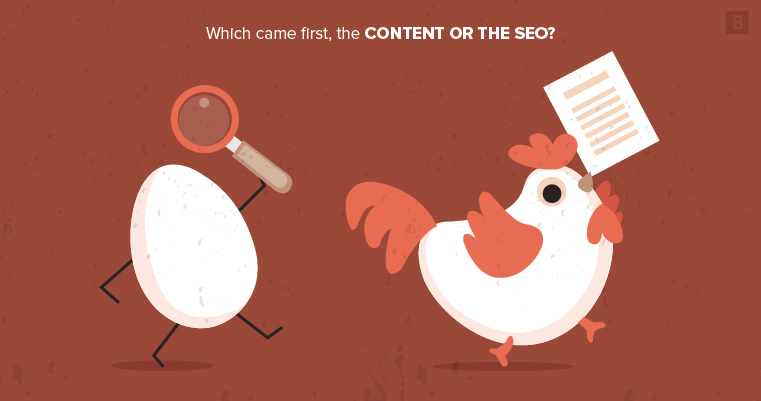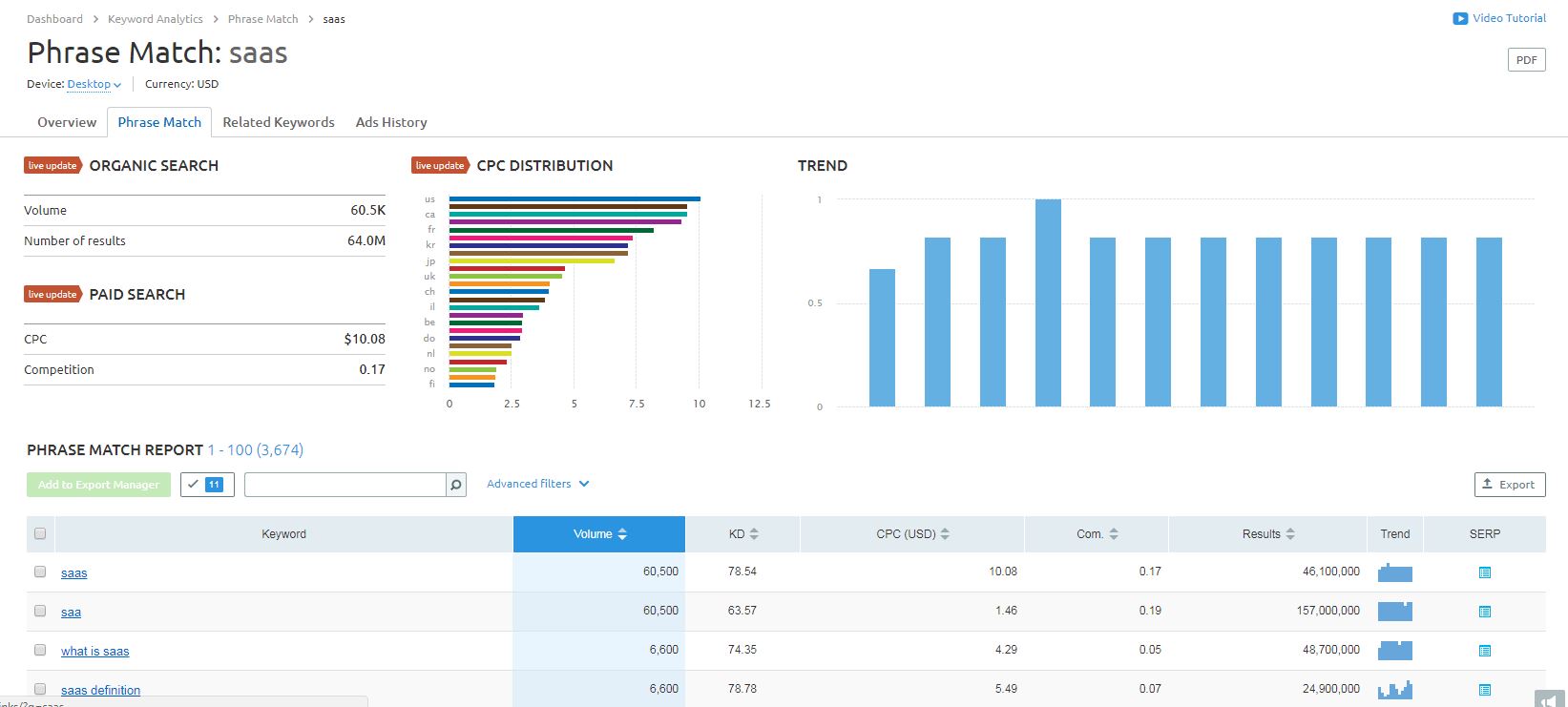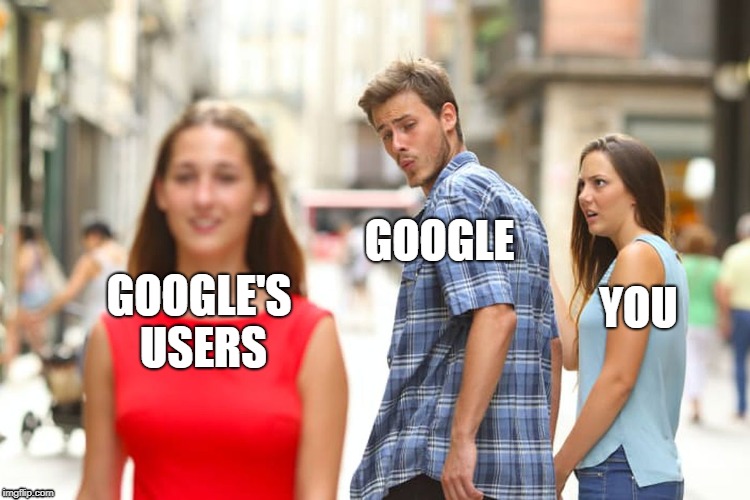Let’s start with the most cliche quote about history in, well, history.
“Those who cannot remember the past are condemned to repeat it.”
That quote is attributed to Spanish-born American philosopher George Santayana, and I think it’s safe to say that he was definitely onto something. While I’m sure Santayana wasn’t thinking about content marketing when he wrote those words (or maybe he was … ?), we should still take this statement to heart when designing an effective strategy.
So what is the history of content marketing? How did it evolve alongside SEO? What should we take away from the past, and how might content marketing and SEO change in the future?
Which came first, the content or the SEO?
OK, so clearly content came first because search engines didn’t exist in the 1700s. That’s when one of the first examples of content marketing emerged: In 1732, Benjamin Franklin (you might have heard of him) published the first annual Poor Richard’s Almanack to promote his printing business.
Content + Promotion = Content marketing.
Similarly, in 1898, John Deere published its first issue of The Furrow, an agricultural magazine with print advertising. Many considered this the first example of content marketing until someone pointed out Franklin’s Almanack. I’ll let you decide who truly holds the title of World’s First Content Marketer, but needless to say, the idea of creating useful copy to advertise a business – rather than just a simple ad – took off. Even before the internet, marketers incorporated storytelling, relevance and customer experience into their content creation in order to generate sales.
Then everyone bought a personal computer toward the end of the 20th century, which changed the game.

The people get online, and the brands follow
Let’s talk about blogs for a minute. Content marketing (and blogs in particular) can be linked to the personal web log craze. Personal blogging really took off around 2002, with people turning what was once a hobby into a career. Different styles of blogging emerged (think mommy bloggers versus craft bloggers), and the content that people published online began having real-life consequences, both good and bad.
In May of that year, Newsweek posed an interesting question: Would blogs kill old media? The answer was quite insightful.
“What makes blogs attractive – their immediacy, their personality and, these days, their hipness – just about ensures that Old Media, instead of being toppled by them, will successfully co-opt them.”
Newsweek was specifically talking about journalism, but this argument applies to marketing as well. After all, businesses succeed with content marketing because their creations are timely (immediacy), reflect their audience (personality) and employ a specific tone (hipness, if you will). Content marketing is a lot like blogging, but instead of sharing baking recipes, you’re selling a product.
2002 and 2003 were big years for personal bloggers and the start of what would turn them into influencers. In August 2002, Pressflex LLC launched Blog Ads. Google followed less than a year later with Adsense, letting bloggers display advertising on their websites. Thanks to the rise of personal blogging, marketers began to understand how quality content, relevance, keyword research and paid ads could effectively increase traffic and generate leads.

Where did SEO come from?
Imagine trying to find information on succulents inside a 100-volume encyclopedia set where every entry is out of order. Yeah, that’s why we have search engines – they make browsing the internet so easy.
Search tools use unique algorithms to collect, organize and rank URLs, then display relevant results when we look for information on a particular subject. Back in the early 1990s, the first engines sorted query results based on keywords found within content and backend optimization like metadata. They also looked at the number of other websites linking back to that content (and the page authority of those sites). The big players emerged after a while, notably Yahoo! in 1994 and Google in 1997. Web designers quickly realized they could decipher these algorithms, structure their websites accordingly and possibly rank higher, thereby increasing their visitor traffic. And so, search engine optimization was born.
Unfortunately, it wasn’t perfect.
The early stages of SEO were a Wild West situation. Marketers operated off the idea that “anything goes,” which led to blackhat strategies like keyword stuffing, horrendously long metadata and spammy link building. Instead of filling websites with anything useful, sketchy strategists would create paragraphs of nothing but keywords, invisible text with even more keywords, and metadata including every variation of those keywords imaginable.
Rare footage of blackhat marketers at work.
But it worked; the more these guys gave search engines what the algorithms were looking for, the higher their sites ranked on results pages. And, since algorithm changes took forever back then, these tactics worked for quite a while.
However, Google eventually realized that connecting users to the content that actually answered their queries – rather than websites that pulled a bait and switch – made it more valuable as a company. So, it started changing its algorithm. Google attempted to level the playing field and give worthy brands and content producers a fair shot at scoring a good rank. And when it started consistently improving its algorithm, the company also delved into local SEO to help people find businesses native to their area. No longer would a user in Oregon be directed to a home restoration service in Atlanta, rather than the one right down the street.
Furthermore, to better position itself as a company that prioritizes the consumer, Google began penalizing blackhat SEO tactics. Using these strategies reduced a website’s ranking, allowing better content to shine through.

… that was the theory, anyway.
Big brands monopolize keywords
Let’s say you’re an emerging SaaS company trying to boost brand awareness and search engine rankings for your business. You’ve got pretty good content marketers on your team, and your writer creates well-written, thoughtful and helpful articles. One of your first thoughts might be, “I’d like to rank for the keyword ‘saas.’”
Let’s see what Google brings up.

As you can see, trying to rank for “saas” puts you in direct competition with Salesforce, Microsoft, Forbes, Software Advice and Wikipedia. If you’ve got the advertising budget to take on these giants (particularly the first three), then I won’t get in your way. Similarly, if you can compete with Wikipedia’s relevance, comprehensive coverage, internal linking strategy and extensive number of backlinks, then go ahead with your bad self.
If not, well, I hate to say it, but basing your SEO strategy on this specific keyword will be an uphill battle at best. It’s better to take an approach where the odds are more in your favor.
Still don’t believe me?

The search volume is nice, but that keyword density pretty much screams, “Too difficult – abort mission!
Brands of all industries realized this – it’s near impossible to compete with the big players for basic keywords when it comes to search rankings. Plus, these individual words no longer relate to how people use search engines. No one’s going to type the word “saas” into Google and expect to find what they’re looking for quickly. Instead, they’re going to search “what is saas,” “best saas products for businesses,” “should I invest in saas,” and similar searches. These queries will bring results that are much more relevant to target audiences and personas, not to mention the searcher’s intent.
We call these long-tail keywords, and they’re better than the old style in just about every way.
First, long-tail keywords better match your user’s intent. Each query looks for something specific, and search engines have evolved to better understand natural, organic language, parsing the way people type and delivering results accordingly.
Second, long-tail keywords help you capture leads wherever they are in the sales funnel. If someone searches for “things to know about employee benefits packages,” a blog post targeting that long-tail word will rank higher for the search query and better capture the attention of a person at the beginning of the funnel. If another person searches “best HR benefits provider”, this query indicates they’re more likely to convert, and a targeted landing page will stick out.

Content marketing and SEO strike the perfect balance
So, what did we learn from this history lesson?
Focus on the customer, not the search engine
Google gets smarter with every algorithm update, improving the search engine’s ability to sniff out marketers trying to game the system. And since the company is so tight-lipped, it’s impossible to predict what they’re going to penalize next. Today’s nifty marketing trick might be tomorrow’s blackhat tactic, but without insight into Google’s thinking (and strategies that bad marketers are using), you’ll never know what changes are coming.
Consider what Overstock.com did back when Google’s Panda algorithm was in place. At the time, Google gave higher authority to domains ending with .edu. So, Overstock partnered with educational institutions, having schools link to its website by using keywords like “laptop computers” and “vacuum cleaners.” Because so many .edu domains were linking back to Overstock.com, the website’s search rank rose for these specific keywords.
Sounds like a nice strategy, right? Overstock even provided discounts for students and faculty for buying these items. But Google didn’t like it, so it penalized the website – even though Overstock had already abandoned this practice once Google took action.
So how do you avoid falling into the same trap? Simple: Make Google’s priorities your own. This means your content marketing strategy should first and foremost focus on providing for the end user. It seems counterintuitive – as marketers, our job is all about increasing traffic, leads and sales – but like my favorite meme, Google isn’t interested in what you want. It’s interested in its users. Focusing on what’s best for them is the best way to stay in Google’s good graces, no matter what algorithmic changes the company creates.

Never stop refining your SEO and content marketing strategies.
Google launched in 1997, meaning it’s gone through hundreds of algorithmic changes in only 21 years. (Moz has a great list of some of the most notable ones. Be prepared to scroll for a while.)
It’s impossible to respond to every update, especially since a good chunk of them are never confirmed. That said, you should definitely revisit your strategy whenever a major change comes around. Each time Google updates to a new animal name, you should analyze your marketing technique.
Content marketing and SEO must work together
Combine the two lessons above, and this is what you get. Content marketing without SEO does nothing for your business, while SEO without content will always work against you.
Regardless of what changes search engines may implement or what devices consumers use, people will never stop searching for some sort of information, and the nature of their search will always dictate their intent. As long as you keep this core truth in mind, your content marketing and SEO strategies will stay on the right track.





